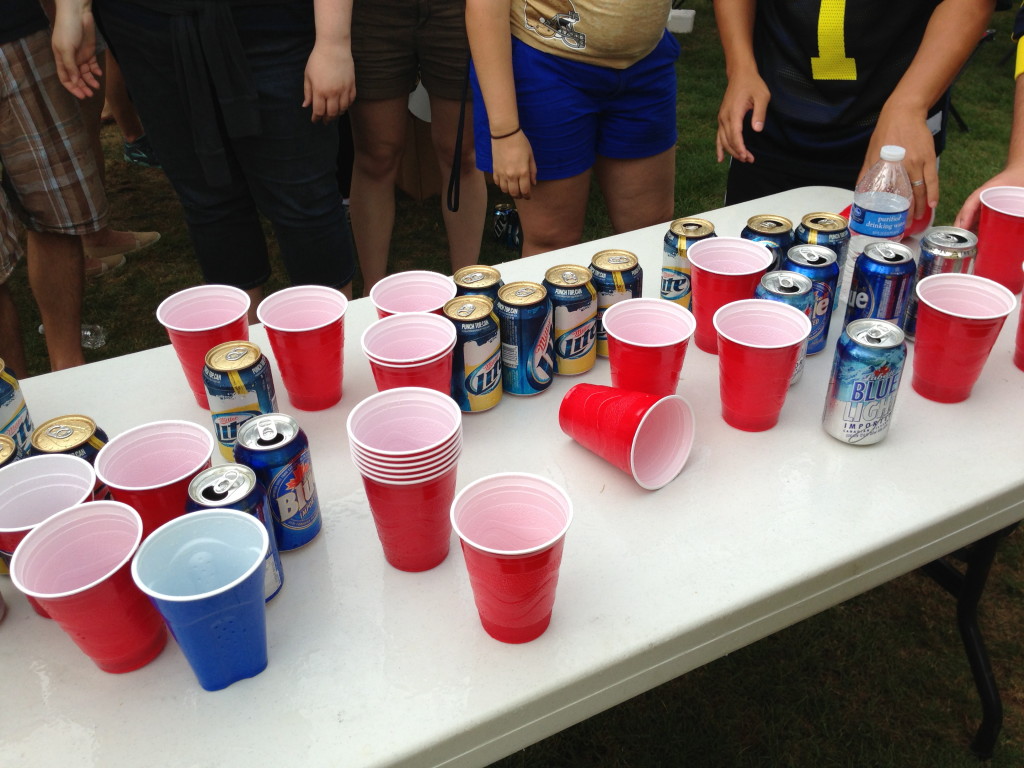On Monday, the Princeton Review’s annual college rankings were released. The rankings usually blow up social media as alums and students check to see how their alma mater fares. This year, The University of Illinois at Urbana-Champaign was ranked as the top party school in the nation.
I wrote the social media post for Smile Politely (Surprise! Our account isn’t a run by bunch of robots!), and used some polarizing language. I said it was “good” that Illinois is the top party school in the country. Unfortunately, that didn’t sit very well with some of our commentariat, and I think I understand where they’re coming from when they say:
Um, is that comment on being the number one party school being a “good” thing meant ironically?
No. Despite wearing slim fitting clothes and having a beard-mustache thing happening on my face, I was not being ironic at all.
The connotation of the word party in this case is subjective. I think what’s being misconstrued as “fun” is being looked at through snooty glasses that equates college partying to collegiate bro-downs. Suggesting that because someone put a number next to the University of Illinois in terms of partying does not mean that the University of Illinois is different than any other school in the country. If a student wants to find a party at Illinois they can. If student wants to find a party at Wheaton College, they can. It’s what happens at college.
What’s not clear is what makes U of I a “party school.” There are other events that could be deemed fun and awesome — which are things a party should be — that should be celebrated. Canopy Club bringing Big Sean to a space near campus, big concerts at State Farm Center, ESPN’s College Gameday broadcasting live, and so much more happen that are positive, party-like events. We need to broaden our small scope of what’s a party at the U of I from FRAT DRINKING BRO to events held by StarCourse and more.
When we say things like:
Why is it “good” that the U of I is the #1 party school? Why is it good that we seem to have a student population full of entitled brats who never go to class and wonder why their GPA sucks?
We’re painting the student population with such an awfully broad brush that is fairly disrespectful of a University that, academically, is doing great things. For example, amongst so-called “party schools” listed by PayScale, the University of Illinois is ranked third in average mid-career salary for alumni and a whopping 25% of students leaving with bachelor’s degrees have them in a STEM field. That’s huge. That’s good, great even.
Obviously, there are dark sides to binge drinking and alcohol abuses on campus. Sexual assault and violence against women are at the forefront of the fight to curb binge drinking on campuses across the country. Rolling Stone’s since-redacted piece highlighted problems of sexual assault on campus and brought the issue to the forefront while unfairly implicating fraternities at the University of Virginia. Unfortunately, rape and sexual assault aren’t confined to frats. That story by Rolling Stone was counterproductive. Yes, it brought the national spotlight to an issue, but it also gave ammo to the “she was asking for it” crowd by being, well, false.
Sexual misconduct and rape are problems on American campuses. But that does not mean that because the University of Illinois was given a #1 party school ranking that the school is in danger of being overrun by rapists and domestic abusers.
In fact, UltraViolet, the women’s advocacy organization actually put together their own campaign against colleges that were known party havens that have problems with sexual assault on their campuses. Not just problems in that sexual assaults are occurring, but problems in how they handle them. The University of Illinois is not a school that raises any of UltraViolet’s red flags.
For those that are unconvinced that this will not turn the University into some kind of cesspool of deviants, This American Life did a story on what happened at Penn State after they were ranked #1 in 2009. (Note: I did not think this episode was one of the better ones done by Ira Glass and friends. It’s fairly prudish and marginalizes college girls for what they’re wearing.)
Outside of the heinous crimes committed by Jerry Sandusky and the insane people that supported him, Penn State actually took measures to try and curb binge drinking on campus and to give students the tools to party responsibly. Fines for public drunkenness and underage drinking were increased, Greeks were given guidelines to follow to chill out their social events, and the school stopped sponsoring “Senior Week.”
If anything, the ranking actually caused the community to be more proactive to make the partying safer. The same things happened at the University of Iowa, West Virginia University, and Ohio University when they were named #1 in the country at partying.
What we have to understand is that, at the end of the day, these are hokey rankings that are not scientific in the least. The partying and shenanigans are going to happen regardless of whether or not the University was ranked first or dead last. If these rankings propel Universities to make their campuses safer because the administration would rather be known for STEM degrees than stem glasses, then that’s probably a good thing.








